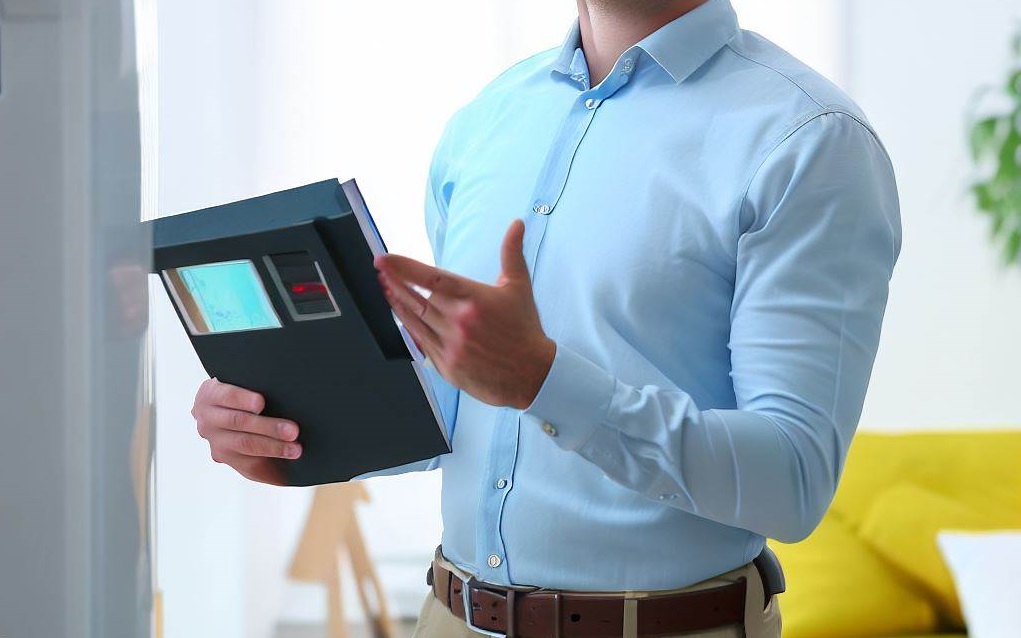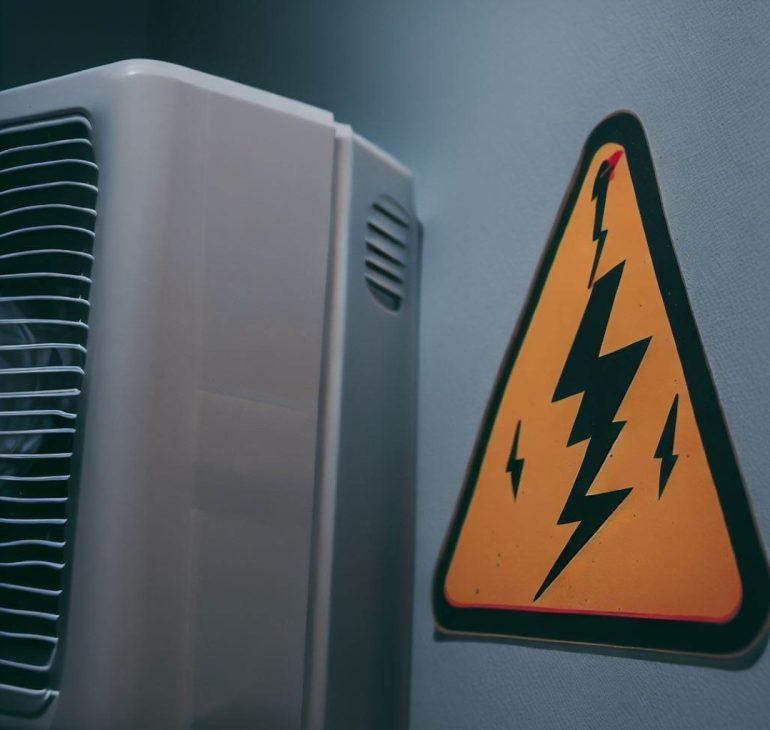If you are contemplating the acquisition of a dehumidifier for your household, a major aspect that might be weighing on your mind is the electricity consumption it entails. After all, nobody wants to be hit with a high energy bill at the end of the month.
Fortunately, there are methods to evaluate and reduce the energy consumption of your dehumidifier. Firstly, it’s good to comprehend that dehumidifiers consume electricity, but aren’t necessarily energy-intensive appliances.
The amount of electricity used by your dehumidifier will depend on its wattage and how frequently you run it. By doing some calculations and making smart choices when selecting a dehumidifier, you can save money and reduce your environmental impact.
In this article, we’ll explore the energy consumption of dehumidifiers in more detail and supply tips for keeping their energy usage under control.
Key Takeaways
- Dehumidifiers use a lot of electricity, with an average wattage of 483 and a cost of £45 per month to run.
- Energy Star-certified dehumidifiers use about 15% less energy and the EPC rating measures energy efficiency.
- Dehumidifiers can help reduce the cost of heating by lowering humidity levels and are cheaper to run than air conditioning units.
- They have advantages such as reducing mould and mildew, improving indoor air quality, and reducing allergies, but also have disadvantages such as noise, maintenance, and cost.
Dehumidifier – Energy Consumption Estimator

If you’re looking to assess the energy consumption of your dehumidifier, consider using an online calculator that takes into account aspects such as wattage and hours used per day. The Energy Consumption Estimator can give you a notion of how much electricity your dehumidifier will use on a daily, weekly, or monthly basis.
This tool also allows you to compare the cost of running distinct models so that you can choose the most energy-efficient option. To optimise energy efficiency and reduce costs further, it’s important to properly maintain your dehumidifier.
Clean the filter regularly to prevent clogging and promote airflow. Choose a proper placement for your unit where it can target areas with high humidity and avoid placing it in corners or against walls. Additionally, noise reduction is another consideration when selecting a dehumidifier model.
Some units come with special features like quiet mode or vibration-dampening technology that can minimise disruptive noise levels while still effectively improving indoor air quality.
Are Dehumidifiers Energy Intensive?
Imagine you are on a road trip and your car is running low on gas, but instead of filling up with the most fuel-efficient option, you choose the one that guzzles the most. That’s what it’s like using some dehumidifiers – they can be energy hogs, costing you more money in the long run.
To make an informed decision when purchasing a dehumidifier, it’s important to consider its wattage and cost. A higher wattage means more energy consumption and ultimately a higher electricity bill. Generally, dehumidifiers fall into three categories: low (100-499 watts), medium (500-749 watts), and high (over 750 watts).
To give you an idea of how much energy these appliances use, here’s a table comparing wattage and an estimated monthly cost for different models:
Dehumidifier Model Wattage Estimated Monthly Cost
| Low | 100-499 | £20-£40 |
| Medium | 500-749 | £40-£60 |
| High | Over 750 | £60-£90 |
As you can see from the table above, choosing a high-wattage model could mean paying up to £90 per month in electricity costs alone. Energy-efficient models with an Energy Star certification use about 15% less energy than non-certified ones.
Additionally, proper maintenance such as regularly cleaning filters can help improve energy efficiency by allowing air to flow freely through the machine. Noise reduction techniques such as placing the unit on carpet or using vibration pads can also make running your dehumidifier more bearable.
The best placement options are basements or other areas closest to sources of moisture where humidity tends to be highest. By following these energy efficiency tips along with comparing wattage and cost before making a purchase decision, you’ll save money while improving your indoor air quality.
What is the Power Consumption of a Dehumidifier?
You might be wondering about the power consumption of your dehumidifier and how it affects your electricity bill. The power consumption of a dehumidifier varies depending on its size, wattage, and energy efficiency rating.
On average, a low-wattage dehumidifier consumes around 293 watts, while medium and high-wattage models consume 545 and 745 watts respectively. Calculating cost is also important when considering the power consumption of your dehumidifier.
On average, running a dehumidifier for 12 hours per day can cost £1.50 per day or over £45 per month. To save on energy costs, consider using an Energy Star-certified dehumidifier that uses up to 15% less energy than non-certified models.
Optimal placement of your dehumidifier can also affect its efficiency; placing it in a closed room where humidity levels are highest can help reduce overall energy consumption. Additionally, noise reduction techniques such as placing it on carpet or rubber pads can make it less intrusive in your home environment.
How Much Electricity Does a Dehumidifier Use?
You’ll be shocked to learn just how much electricity your dehumidifier is using, and it could be costing you a fortune every month. On average, dehumidifiers use around 483 watts of power, but this can vary depending on the size and energy efficiency of the unit.
In fact, some high-wattage models can cost up to £90 per month to run! To reduce your energy usage and costs, it’s important to choose an energy-efficient model with an Energy Star certification and EPC rating.
Additionally, consider alternative moisture control methods such as proper ventilation and fixing any leaks or water damage in your home. Seasonal use of your dehumidifier during spring, summer, and early fall can also help lower energy usage.
Finally, monitoring your energy usage and only running the dehumidifier when necessary can make a significant impact on reducing its electricity consumption.
What is the Monthly Energy Usage of a Dehumidifier?
Get ready to feel the pinch in your wallet as you discover the shocking monthly cost of running a dehumidifier, which can add up to over £45 per month on average. This figure may alter depending on elements such as the size and energy efficiency of your dehumidifier, as well as how often and for how long you run it.
To reduce your dehumidifier costs, consider investing in an energy-efficient model with an Energy Star certification and a high EPC rating. Proper dehumidifier maintenance can also help prolong its lifespan and improve its efficiency. Clean or replace the air filter regularly, empty the water tank when it’s full, and keep the unit away from obstacles that could block airflow.
Additionally, proper placement is crucial for optimal performance. Place your dehumidifier in a central location where there is high humidity, such as a basement or laundry room. Keep doors and windows closed while using them to prevent humid air from entering. If you’re using a dehumidifier with an air conditioner, make sure they are working together efficiently to improve indoor air quality while reducing energy consumption and costs.
Finally, if noise is an issue for you, choose a unit with low decibel levels or invest in noise-reducing features like insulated walls or vibration-absorbing pads under the feet of your unit.
Can Dehumidifiers Lower Heating Expenses?
Lowering your heating expenses may be as simple as investing in a dehumidifier. It can reduce humidity levels and make your home feel warmer without using additional energy. By reducing humidity levels, a dehumidifier can help you save on heating bills. It makes the air feel warmer and creates less moisture to evaporate from surfaces, such as furniture and walls. This means that the temperature can be lowered while still maintaining the same level of comfort.
When choosing a dehumidifier for this purpose, it’s important to consider the size of your space and the energy efficiency of different models. A larger space will require a higher wattage dehumidifier to effectively reduce humidity levels, but this also means that it will use more electricity. Look for Energy Star-certified models with high IEF ratings to ensure that you are maximizing energy efficiency while still achieving your desired results.
Proper maintenance is key in ensuring that your dehumidifier lasts longer and operates at peak performance. Regularly cleaning or replacing filters and emptying water tanks will keep your unit running smoothly while also contributing to lower energy bills over time.
Frequently Asked Questions
Can dehumidifiers be harmful to the environment?
Dehumidifiers can have a negative impact on the environment due to their energy usage. However, there are eco-friendly options such as sustainable and energy-efficient dehumidifiers that can help reduce carbon footprint and promote green home appliances.
How often do dehumidifiers need to be maintained?
Maintaining your dehumidifier is crucial for optimal performance. Regular cleaning and filter replacement, along with drainage and coil maintenance, are necessary tasks. Additionally, cleaning the fan blades can improve airflow. Don’t neglect these tasks to ensure your dehumidifier lasts a long time.
Can dehumidifiers be used in conjunction with air purifiers?
Dehumidifiers can be used with air purifiers to improve air quality. They provide health benefits by reducing mould and dust mites. Energy-efficient models are available, but noise levels and filter replacement should be considered.
Are there any alternative ways to control humidity levels in a room besides using a dehumidifier?
Natural methods, such as ventilating with open windows and using moisture-absorbing plants, can control humidity levels in a room. Humidity monitoring devices can also help. Air conditioning alternatives include evaporative coolers and ductless mini-split systems.
How long do dehumidifiers typically last before needing to be replaced?
Dehumidifiers typically last 5-10 years, depending on usage and maintenance. Regular cleaning and filter replacement can extend lifespan expectancy. Replacement costs vary by brand and model, but energy-efficient options like Energy Star-certified dehumidifiers can save money in the long run.
Conclusion
So, do dehumidifiers use a lot of electricity? The answer is: it depends. While some models can be energy-intensive and costly to run, there are also many options available that are designed with energy efficiency in mind.
By choosing an energy-efficient dehumidifier and following some simple tips for reducing its environmental impact, you can enjoy the benefits of reduced moisture and improved air quality without breaking the bank.
To make an informed decision when choosing a dehumidifier for your home, it’s important to consider factors such as its wattage, monthly energy usage, and potential cost savings on heating expenses. By using an online energy consumption estimator, you can compare different models and determine which one is best suited to your needs and budget.
In conclusion, while dehumidifiers may require some initial investment in terms of electricity usage, there are many ways to minimise their environmental impact while still achieving optimal results. By taking advantage of the latest technology and innovations in energy-efficient design, you can enjoy all the benefits of a healthier home environment without sacrificing your wallet or the planet.

